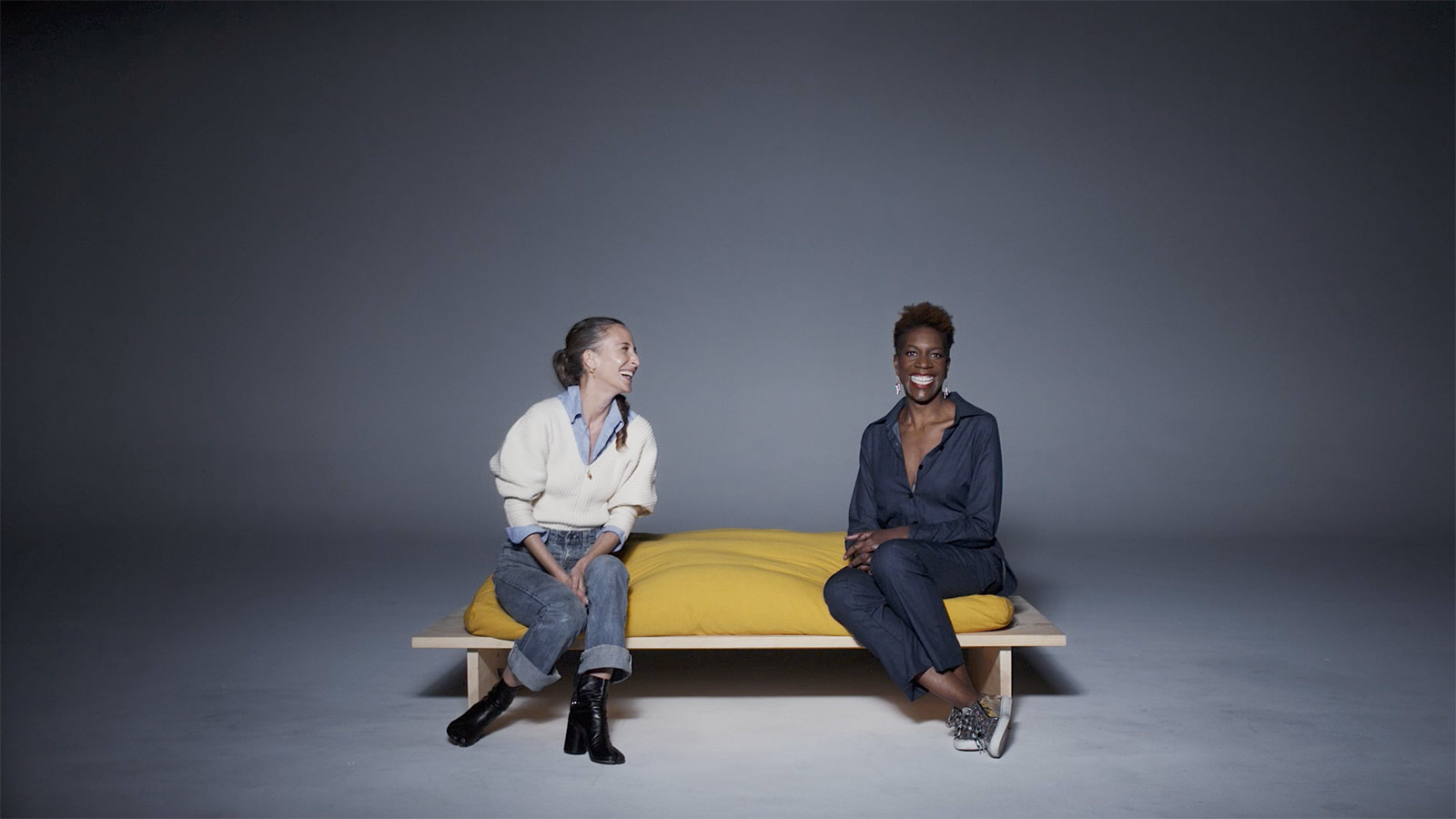Though sustainability is a high-priority for many businesses today, the question is always: where do I begin?
One x One is a project that aims to aid designers by addressing Circularity, Equity, and Renewable Technology through the lens of design, timeless beauty, and empathy. The project –from the Slow Factory Foundation, in partnership with Swarovski, and supported by The United Nations Office for Partnerships – is helping the fashion industry make radical change by starting small. Three innovative scientists were paired with three expert designers – Mara Hoffman, Phillip Lim, and Public School – alongside an incredible array of global advisors, including Alexi Lubomirski and Amber Valetta, to guide, challenge, and inspire the teams design differently. See how the CFDA member brands worked on their projects below:
Mara Hoffman & Custom Collaborative
The project accelerated the pre-existing relationship between the designer and New York-based workforce development program, whose work sits at the intersection of sustainability and social justice. Led by Ngozi Okaro, the project consisted of an Apprenticeship Pilot Program with the Mara Hoffman team for six weeks, providing technical design training, career training, and wellness education to three Black immigrant women via Zoom. Industry professionals were brought in to provide these women with a skillset and confidence to step into roles to achieve economic independence. Apprentices also made face masks for the brand, with 100% of profits going to Custom Collaborative graduates in efforts to keep them employed. The company will also continue to train and support apprentices until they secure a position in the fashion industry. The small-scale initiative serves as a template that can be replicated throughout the industry, leaving an enormous ripple effect on marginalized communities.
Phillip Lim & Charlotte McCurdy
Focusing on Regenerative Technologies, Phillip Lim and Charlotte McCurdy are working together to employ carbon neutral materials to reimagine a new conscious luxury. McCurdy is an interdisciplinary designer whose work focuses on making existential threats, such as climate change, more tractable through design. The collaboration has sparked the use of an algae-based material, adapted as an alternative to plastic sequins. The duo have also collaborated with PYRATES, an R&D company and textile supplier focused on developing and supplying innovative and eco-responsible materials to develop a base fabric for the algae-made sequins that is an antiperspirant and thermoregulating material.
Public School NY & Theanne Schiros
Dao-Yi Chow and Maxwell Osborne teamed up with the scientist to work with a new “leather” alternative grown from bacteria, while developing a circular model that allows waste to serve as a regenerative resource. The “bio-leather” is a new take on nanocellulose produced by SCOBY (symbiotic culture of bacteria and yeast), the process used to brew kombucha. The dyeing has also been done with natural, nontoxic dyes and treated with an innovative new process based on Dr. Schiros’ groundbreaking research. This process is over 10,000 times lower human toxicity than chrome-tanned leather, with 2-3 orders of magnitude lower carbon footprint than PU or plastic-based leather alternatives. The success is seen in the two-tone black & white sneakers, which feel even cooler once you know the process behind the footwear.



